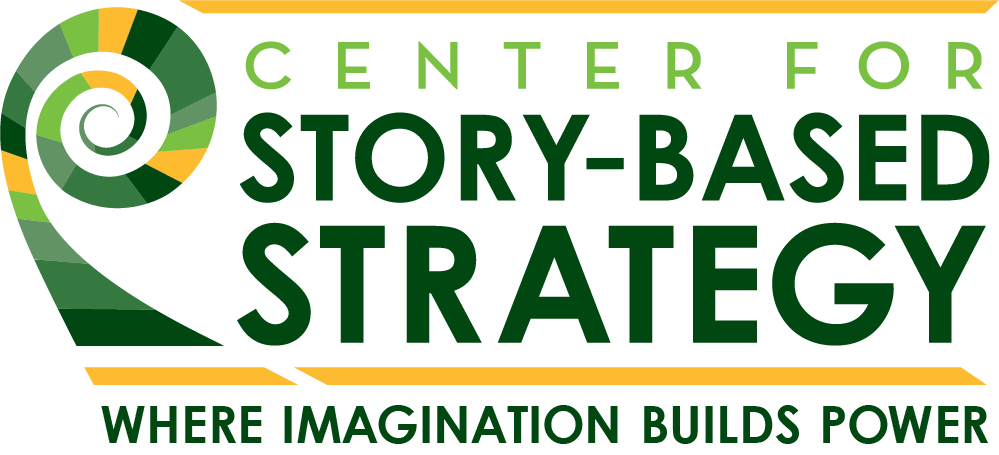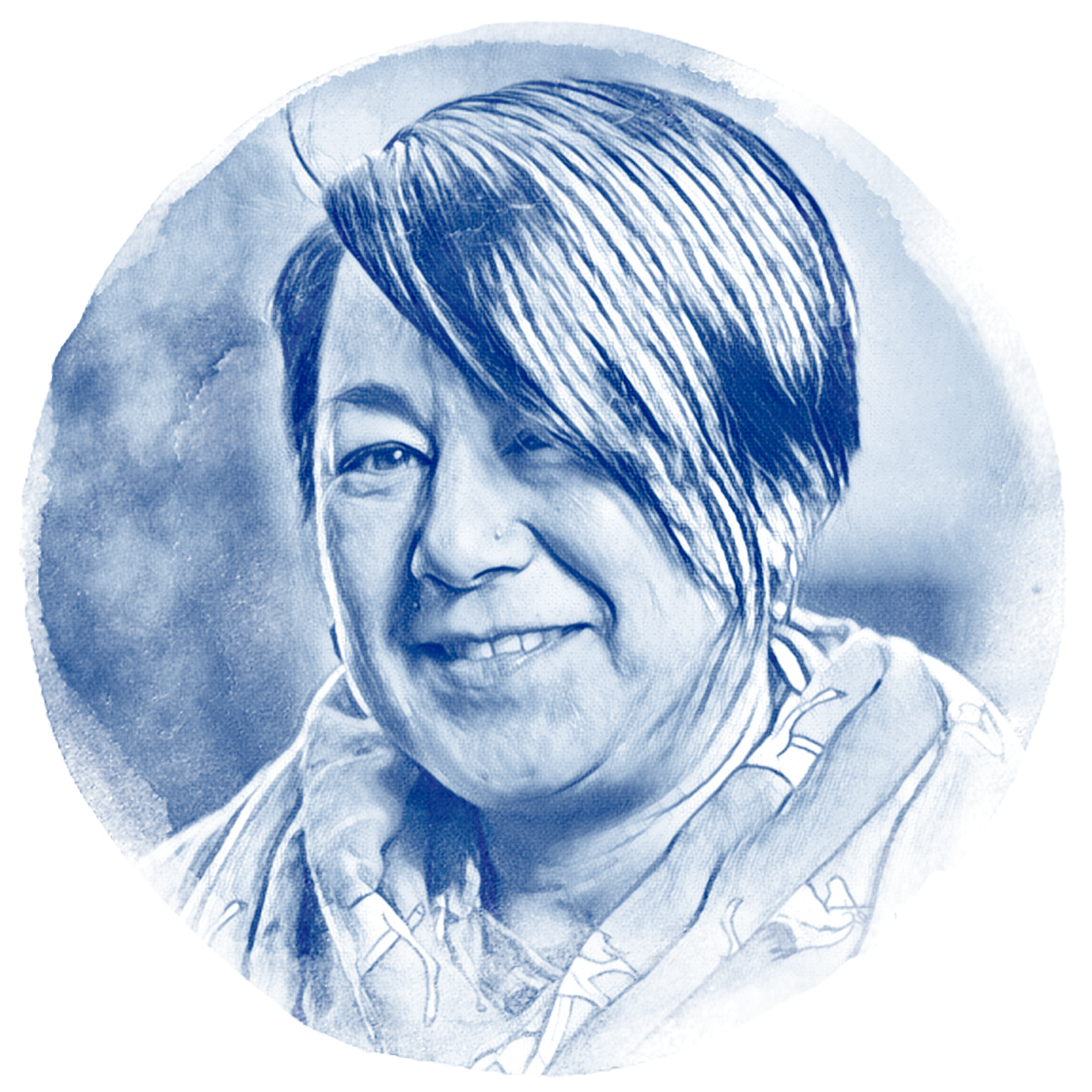Imagination Builds Power: Erin O’Brien takes us from concept to final product
Erin O’Brien, CSS Trainer
Describe yourself in 3 words.
Quirky Unique Punkrock
Tell us about yourself.
I am a mixed race Queer Los Angeles based artist. I am a trainer and consultant with CSS with a background as an organizer in social justice movements, former faculty in Asian American Studies, and also private chef. It seems like a lot of different things but, somehow they all make sense together.
Tell us about the work that you are doing with CSS.
I was asked to put together a short 3-minute animated video to introduce story-based strategy. Originally it was going to be one of those graphic note-taking type videos. Through the process of making the video the concept and design of the project changed dramatically and the final result was a stop motion animation short film.
Case Study Lessons:
SBS increases ability to see the totality of systems of oppression
SBS adds strategy to decisions that are often made from a (valid) place of emotions.
SBS Tools Used: Cornerstones
This project is a bit meta, we are using story-based strategy to explain what is story-based strategy and then within the animation itself, the storyline is that of a community using story-based strategy to win.
How can folks see your work?
Watch the video below! (Check it out in Spanish too)
How would you describe story-based strategy (SBS) to someone who has never heard about it?
With story-based strategy we are trying to bring narrative stories alive so we can win concrete change in our communities. We train organizers how to “show don’t tell” and to use creative interventions strategically to advance their issue, connect with audiences, change the story and win.
Tell us about the creative process for this video, and how SBS informed your decisions along the way.
Working from a script
I think often people don’t realize all the steps and decisions that go into creating even a small 3-minute video. Since this project is a video to introduce story-based strategy, I started the project with the text of the intro to story-based strategy so, you could say, story-based strategy was the foundation for the project, literally. Starting with the text itself I did a distillation, highlighting words and phrases that were the core of the text. The idea was to identify these keywords or phrases in order to visualize the important points.. Words evoke images and feelings. The key with graphic note-taking is to make the information clear using images. In graphic note-taking you synthesize the information, break things down into images and phrases, organize and connect ideas and statements with a visual language, and add details and color to highlight. Usually, this is done in real time while people are talking but for this project the idea was to do this with animation in a short video.
A still from the initial pitch
The initial pitch was to take graphic notation concept further and do a mix of hand drawn animation, animating still photos and found footage. I set out to find footage to translate the text, identifying images we could use from CSS’s cache of documentation of people from our network of SBS practitioners. These were images we took ourselves and already have the rights too. It took some time, but I animated the important phrases, concepts and ideas and put them together with found footage and our CSS documentation photos.
The note-taking aesthetic
On a technical note I used Procreate (a design app) to draw and create time lapse videos of the drawings for the animations, and to animate still images. I am using an Apple Pencil and a iPad Pro. The videos were edited in alongside the animations. The first pass was a mix of these mediums in the hopes of telling our SBS story. It sorta worked but it was a little clunky and slow. It didn’t flow well, and while I was trying to tell the CSS SBS story, it just didn’t land.
CSS Innovation Director Felicia Perez was really pushing for a visual narrative story, “You should be able to understand what is happening without the audio on,” she encouraged me to do a Narrative Power Analysis (NPA) on the video. NPA is analytic framework we use for assessing the interactions between narrative and relationships of power. NPA can be used both deconstructively to analyze stories and constructively to create new stories. I watched the first pass over and over again to try to figure out why the story wasn’t working. A NPA of the first pass revealed that the images I chose weren’t going to work. We had staged a photo shoot to create stock images before we knew what the video was going to look like, not knowing what story we wanted to tell.
Not the right kind of villain!
Several images stood out as illustrations of the way race, class and gender complicate the stories we tell and how to tell them. For example, I chose what I thought was great image to show the villain, a person in a fairly scary wolf mask. Once you look past the wolf mask, you can see that the villain, although their face is obscured, is a person of color and, well we can’t go around labeling people of color as villains.
A lightbulb” moment
Casting of characters matters.
Another image I chose was one of our trainers with a “lightbulb moment” and then the animated light bulb transforms into a butterfly to represent innovation, thinking outside the box. But what does it mean if we figure a white person, albeit gender non-conforming and queer as the bearer of ideas and innovation? Then the image of one of our network members with a giant hammer — you know, the weapon of imagination, and it just looked plain scary. We are definitely not trying to make people of color look scary. When we worked with the still images we already had of people in our network I was till running into problems about how we tell stories and the messages and meanings that are held by images and what other stories they tell whether we mean to say it or not. When I applied NPA and F.R.A.M.E.S to this video it just did not work. I had to scrap the whole video. Sometimes it takes a couple tries to get things right.
A quick test GIF
I was stuck, how do you figure people without figuring actual people. Well, what if i don’t use any people in the video at all? I was thinking let me just break this up into pieces and try something new. I thought about our gif-a-thon sandbox training and figured why not break this project into manageable pieces — I’ll focus on one small phrase or concept and make a GIF. If I make a couple GIFs, I can string them all together. I was excited about this quick little animated GIF I made.
Proof of concept stop motion animation
I realized GIF was a quick and easy version of stop motion animation. Frankly, I wasn’t feeling super confident in my drawing capabilities. I leaned on what I already know, a medium i’m already familiar with — felt. I started with something I thought would be easier to show not tell, “different movements.” I made a quick batch of protest signs and banners out of felt to represent all the different groups that make up our movement out of felt and made a little stop motion animation. I was thrilled that this worked.
I remembered I had a whole cast of characters the Celestial Carnival from a short film I had made years ago, each animal was needle felted by hand. These felted creatures were just sitting on a shelf waiting to get cast in their next big gig. This got me really excited - here I could “show not tell”, and center people, well creatures anyway, and yet, these are clearly creatures of color. Chang the tiger is a refugee from Southeast Asia, the elephants Noble, Charlie and Lucy are from India, Francine like most giraffes is from the African continent, via transnational migration through colonial Europe and Stewie the bear is a California Brown bear, as in the big, furry, gay kind of bear - complete with a full back and sleeve of tattoos and earrings. I was reminded of what the first attempt was missing - clear characters. Then I thought about SBS Elements of Story - Conflict, Characters, Imagery, Foreshadowing, and Assumptions. These elements were all missing from the first version. It was not enough to visually represent the concepts and phrases, I needed to also tell a story. Why not tell the story of a community organizing project? The narrative of a community organizing against toxic waste and transforming vacant land into fruitful gardens seemed a good story — conflict, characters, imagery, foreshadowing, assumptions - it was all there.
I used the Fairy Tales exercise to figure out what the narrative strategy might be for these residents of Anytown and also used the 4th box exercise that we use to imagine what could be. I was reminded every time we do the 4th box exercise a participant always proposes or draws a garden - like it is the answer to everything. Whether or not it is the answer, it seems a good metaphor for what we do at CSS - planting seeds of imagination.
How was working on this project, using SBS, different from your work without SBS?
SBS gave this project depth and dimension and focus. SBS was at the foundation of this project and an opportunity to showcase SBS. You can see from the initial versions I created without using SBS the video wasn’t working to really showcase what we can do with SBS.
If you could have another iteration of your work, how would it have changed?
Given more time and resources I could have created more complex scenes and shots from multiple angles. I would have also created subtitles.
Do you think SBS will change how you relate to future work in collaboration with others? How? And why?
I can’t go backwards and I’m grateful that SBS can be an opportunity to share the work we do at CSS with others in fun and creative ways.









